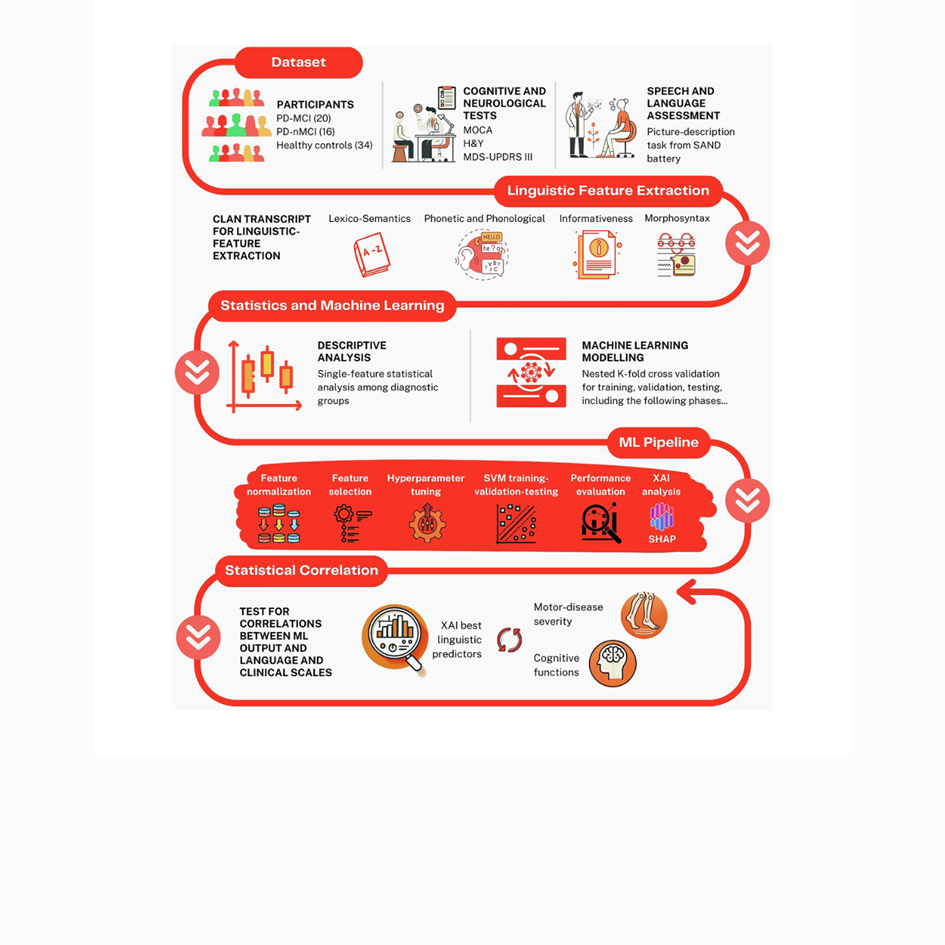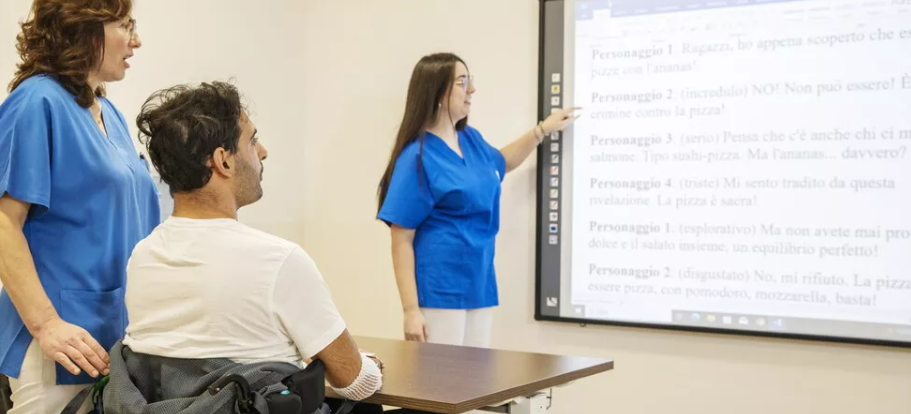Digital phenotyping of Parkinson’s disease via natural language processing
Aresta, S., Battista, P., Palmirotta, C., Tagliente, S., Lagravinese, G., Santacesaria, P., Benzini, A., Mongelli, D., Minafra, B., Lunetta, C., García, A. M. & Salvatore, C. Digital phenotyping of Parkinson’s disease via natural language processing (2025). Digital phenotyping of Parkinson’s disease via natural language processing. npj Parkinson’s Disease 11, 182.
La degeneración frontostriatal en la enfermedad de Parkinson (EP) se asocia con déficits del lenguaje, que pueden identificarse mediante el procesamiento del lenguaje natural, una herramienta extraordinaria para el fenotipado digital. La evidencia actual es en gran medida ciega a los fenotipos cognitivos del trastorno. Validamos un enfoque basado en la inteligencia artificial para capturar marcadores digitales del lenguaje de la EP con y sin deterioro cognitivo leve (EP-DCL, EP-nDCL) en relación con controles sanos (CS). Analizando el habla conectada de los participantes, extrajimos características lingüísticas con el software CLAN. La clasificación se realizó utilizando SVM y RFE. La discriminación entre EP y HC alcanzó un AUC del 77 %, con resultados aún mejores para los análisis de subgrupos (AUC: 85 % EP-nMCI frente a HC; 83 % EP-MCI frente a HC; 75 % PD-nMCI frente a PD-MCI). Las características lingüísticas clave incluyeron el retrazo, los verbos de acción, los errores de expresión y las proporciones de expresiones sin verbos. A pesar del pequeño tamaño de la muestra, que puede limitar la potencia estadística y la generalización, este estudio destaca el potencial fundamental de los marcadores lingüísticos digitales para el diagnóstico precoz y la fenotipificación de la EP.
Para acceder al artículo, hacé click aquí.
Digital phenotyping of Parkinson’s disease via natural language processing
Aresta, S., Battista, P., Palmirotta, C., Tagliente, S., Lagravinese, G., Santacesaria, P., Benzini, A., Mongelli, D., Minafra, B., Lunetta, C., García, A. M. & Salvatore, C. Digital phenotyping of Parkinson’s disease via natural language processing (2025). Digital phenotyping of Parkinson’s disease via natural language processing. npj Parkinson’s Disease 11, 182.
Frontostriatal degeneration in Parkinson’s disease (PD) is associated with language deficits, which can be identified using natural language processing, a remarkable tool for digital-phenotyping. Current evidence is mostly blind to the disorder’s cognitive phenotypes. We validated an AI-driven approach to capture digital language markers of PD with and without mild cognitive impairment (PD-MCI, PD-nMCI) relative to healthy controls (HCs). Analyzing the connected speech of participants, we extracted linguistic features with CLAN software. Classification was performed using SVM and RFE. Discrimination between PD and HCs reached an AUC of 77%, with even better results for subgroup analyses (AUC: 85% PD-nMCI vs. HCs; 83% PD-MCI vs. HCs; 75% PD-nMCI vs. PD-MCI). Key linguistic features included retracing, action verb, utterance error, and verbless-utterance ratios. Despite the small sample size, which may limit statistical power and generalizability, this study highlights the foundational potential of linguistic digital markers for early diagnosis and phenotyping of PD.
To access the full paper, please click here.



